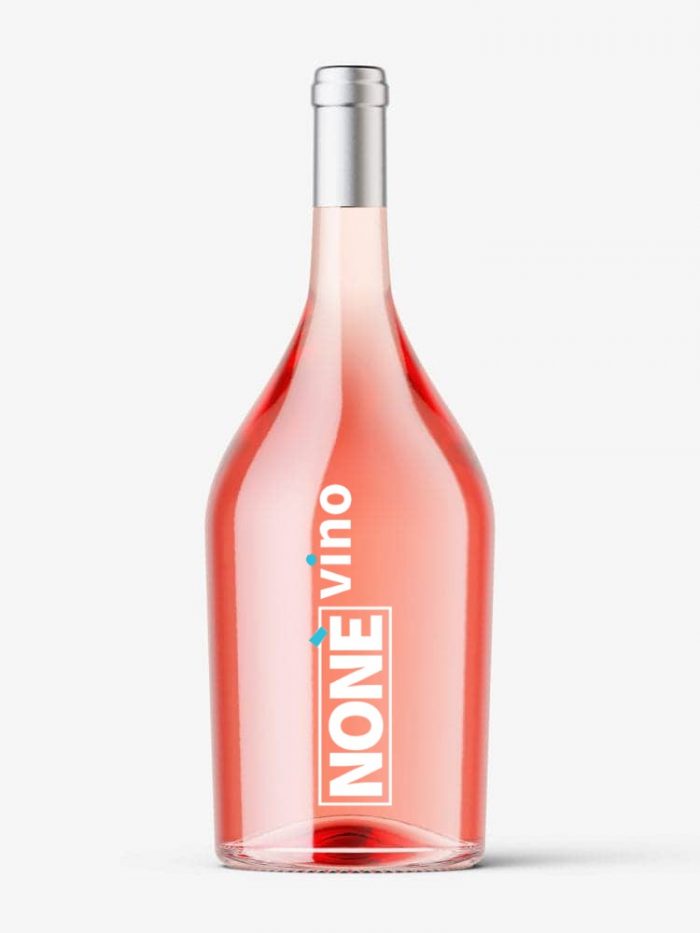The Monferrato territory is divided into 3 wine production areas:
1) Alto Monferrato, is the area to the south-east, in the province of Alessandria, with rather marked hills, towers and castles, with the cities of Ovada and Acqui Terme. It is the land of Barbera del Monferrato and Cortese.
2) Basso Monferrato (or Casalese) , extends to the north-east, with low hills sloping down to the Po ‘, with the city of Casale on the border and the characteristic villages of Cellamonte and Vignale Monferrato (where the Regional Enoteca of Monferrato is located ). It is the land of Barbera and Grignolino.
3) Monferrato Astigiano, almost entirely occupies the province of Asti, to the right and left of the Tanaro river, with soft hills and many historic villages, such as Costigliole, Nizza, Canelli, Cortanze, Cocconato and Montiglio. And with the city of Asti which gave birth to Alfieri. In addition to being the area of the great Barbera d’Asti, it is also the one where Italian sparkling wine was born in the last century, and which today offers a great variety of vines and wines.
The geographical area dedicated to the production of DOC Monferrato wine extends over the hilly territory located mainly within the provinces of Alessandria and Asti, and extends southwards starting from the hydrographic right of the Po until reaching the foot of the Ligurian Apennines on the border with the Province of Genoa and the Province of Savona. The adequately ventilated and bright area is particularly favorable to the fulfillment of all the vegetative-productive functions of the vineyards.
The Production Area of the DOC Monferrato White, Red, Chiaretto (or Ciaret), Dolcetto and Freisa Wine it is located in:
– province of Alessandria and includes the territory of the municipalities of Acqui Terme, Alfiano Natta, Alice Bel Colle, Altavilla Monferrato, Basaluzzo, Bassignana, Belforte Monferrato, Bergamasco, Bistagno, Borgoratto Alessandrino, Bosio, Camagna,
Camino, Capriata d’Orba, Carentino, Carpeneto, Carrosio , Cartosio, Casaleggio Boiro, Casale Monferrato, Cassine, Cassinelle, Castelletto d’Erro, Castelletto d’Orba, Castelletto Merli, Castelletto Monferrato, Castelnuovo Bormida, Cavatore, Cellamonte, Cereseto, Cerrina, Coniolo, Conzano, Cremolino, Cuccaro Monferrato, Denice , Francavilla Bisio, Frascaro, Frassinello Monferrato, Fubine, Gabiano, Gamalero, Gavi, Grognardo, Lerma, Lu, Malvicino, Masio, Melazzo, Merana, Mirabello Monferrato, Molare, Mombello Monferrato, Moncestino, Montaldeo, Montaldo Bormida, Montecastello, Montechiaro d ‘Acqui, Morbello, Mornese, Morsasco,Murisengo, Novi Ligure, Occimiano, Odalengo Grande, Odalengo Piccolo, Olivola, Orsara Bormida, Ottiglio Monferrato, Ovada, Ozzano, Pareto, Parodi Ligure, Pasturana, Pecetto di Valenza, Pietra Marazzi, Pomaro Monferrato, Pontestura, Ponti, Ponzano, Ponzone, Prasco, Predosa, Quargnento, Ricaldone, Rivalta Bormida, Rivarone, Roccagrimalda, Rosignano Monferrato, Monferrato Room, San Cristoforo, San Giorgio Monferrato, San Salvatore Monferrato, Serralunga di Crea, Serravalle Scrivia, Sezzadio, Silvano d’Orba, Solonghello, Spigno Monferrato , Strevi, Tagliolo Monferrato, Tassarolo, Terruggia, Terzo, Treville, Trisobbio, Valenza Po, Vignale Monferrato, Villadeati, Villamiroglio and Visone.Pecetto di Valenza, Pietra Marazzi, Pomaro Monferrato, Pontestura, Ponti, Ponzano, Ponzone, Prasco, Predosa, Quargnento, Ricaldone, Rivalta Bormida, Rivarone, Roccagrimalda, Rosignano Monferrato, Sala Monferrato, San Cristoforo, San Giorgio Monferrato, San Salvatore Monferrato, Serralunga di Crea, Serravalle Scrivia, Sezzadio, Silvano d’Orba, Solonghello, Spigno Monferrato, Strevi, Tagliolo Monferrato, Tassarolo, Terruggia, Terzo, Treville, Trisobbio, Valenza Po, Vignale Monferrato, Villadeati, Villamiroglio and Visone.Pecetto di Valenza, Pietra Marazzi, Pomaro Monferrato, Pontestura, Ponti, Ponzano, Ponzone, Prasco, Predosa, Quargnento, Ricaldone, Rivalta Bormida, Rivaro
Quargnento, Ricaldone, Rivalta Bormida, Rivarone, Roccagrimalda, Rosignano Monferrato, Monferrato Room, San Cristoforo, San Giorgio Monferrato, San Salvatore Monferrato, Serralunga di Crea, Serravalle Scrivia, Sezzadio, Silvano d’Orba, Solonghello, Spigno Monferrato , Strevi, Tagliolo Monferrato, Tassarolo, Terruggia, Terzo, Treville, Trisobbio, Valenza Po, Vignale Monferrato, Villadeati, Villamiroglio and Visone.Pecetto di Valenza, Pietra Marazzi, Pomaro Monferrato, Pontestura, Ponti, Ponzano, Ponzone, Prasco, Predosa, Quargnento, Ricaldone, Rivalta Bormida, Rivarone, Roccagrimalda, Rosignano Monferrato, Sala Monferrato, San Cristoforo, San Giorgio Monferrato, San Salvatore Monferrato, Serralunga di Crea, Serravalle Scrivia, Sezzadio, Silvano d’Orba, Solonghello, Spigno Monferrato, Strevi, Tagliolo Monferrato, Tassarolo, Terruggia, Terzo, Treville, Trisobbio, Valenza Po, Vignale Monferrato, Villadeati, Villamiroglio and Visone.Pecetto di Valenza, Pietra Marazzi, Pomaro Monferrato, Pontestura, Ponti, Ponzano, Ponzone, Prasco, Predosa, Quargnento, Ricaldone, Rivalta Bormida, Rivarone, Roccagrimalda, Rosignano Monferrato, Sala Monferrato, San Cristoforo, San Giorgio Monferrato, San Salvatore Monferrato, Serralunga di Crea, Serravalle Scrivia, Sezzadio, Silvano d’Orba, Solonghello, Spigno Monferrato, Strevi, Tagliolo Monferrato, Tassarolo, Terruggia, Terzo, Treville, Trisobbio, Valenza Po, Vignale Monferrato, Villadeati, Villamiroglio and Visone.
– province of Asti and includes the territory of the municipalities of Agliano, Albugnano, Antignano, Aramengo, Asti, Azzano d’Asti, Baldichieri d’Asti, Belveglio, Berzano San Pietro, Bruno, Bubbio, Buttigliera d’Asti, Calamandrana, Calliano, Calosso, Camerano Casasco , Canelli, Cantarana, Capriglio, Casorzo, Cassinasco, Castagnole Lanze, Castagnole Monferrato, Castel Boglione, Castell’Alfero, Castellero, Castelletto Molina, Castello d’Annone, Castelnuovo Belbo, Castelnuovo Calcea, Castelnuovo Don Bosco, Castel Rocchero, etc..
All of Piedmont is a region dedicated to viticulture, but the Monferrato is even more striking: the vineyards almost entirely cover the tops and slopes of the hills, alternating with small woods. The reason for this particular vocation lies in an excellent mix of climate and geological conformation of the land, which has allowed a wide diffusion of the vines, most of which are indigenous, and of an equally consequent variety of wines.
In Monferrato the vine and wine are not only one of the main sources of wealth but also an expression of culture and tradition, the result of a tenacious attachment to the land and centuries of hard work, necessary to carry out an agrarian transformation of exceptional dimensions .
We have to wait until the nineteenth century to witness significant changes. Under the Savoy State, the nobility and the clergymen gradually lost their properties. The climate of peace, the enlightenment egalitarianism brought about by Napoleon and the demographic growth caused the farmers not only to grow the need for new land to cultivate, satisfied with large reclamation and deforestation, but also the sense of the right to land ownership, so entire generations fought.
Viticulture, which has always been practiced, became even more important: with hard effort, innumerable new vineyards were planted, capable of giving a profitable product. The traditional Monferrato farm, essentially having to satisfy its internal need, devoted itself to polyculture: meadows in the lower valley, cereals and medical crops in rotation in the slightly higher areas, woods on the northern slopes and vineyards on those exposed to the sun (sometimes interspersed with wheat, or vegetables and potatoes, or nuts and fruit trees). The little surplus produced was used to pay in kind a rent or debt incurred to buy land or livestock. In this context of self-sufficiency there were also some specific crops: the common cane, of which the stems were and
are still used as support and the leaves suitably treated for the ligatures; the willow for the bindings; the mulberry tree for the breeding of the silkworm, now abandoned; the walnut for the oil; and in the Alto Monferrato the hazelnut.
The spread of small peasant property corresponded to that of farms, isolated or in small groups: new settlements with which the peasants, moving from the villages, came as close as possible to the land to be cultivated, and above all they brought their slow oxen closer to the land.
In the second half of the nineteenth century, the advent of the train and the construction of new roads, together with the lack of defense requirements, led to the progressive displacement of the population from the top to the valley floor, near the stations and roads, with the birth of new villages and the downward expansion of existing ones.
At the end of the century the real abandonment of the hill began, caused both by the demographic increase and consequent scarcity of arable land, and by the serious scourge of phylloxera which seriously affected all Italian viticulture. Many Monferrato went to work in the city industries or emigrated to Australia or South America.
Today the mechanization of some of the cultivation operations leads to a more extensive agriculture, with less use of manpower and abandonment of too steep surfaces, difficult to cultivate with the current scarcity of manpower. From mixed farming we move on to specialization. In the valley bottoms, meadows for livestock are being replaced by cellulose poplar groves, and traditional cereals, such as wheat and corn, soybeans and sunflowers. The small plots, with a slow process, are merging into larger ones and in the wine-growing systems there has been a profound innovation with the use of concrete poles, iron or steel wires, synthetic materials for binding.
The viticultural specialization has favored land reorganization in the areas most favored by the DOC:
the Asti and Monferrato vineyards thus appear strongly original due to the relative homogeneity of its natural and socio-economic environment.
The DOC Monferrato wine obtained the recognition of the Controlled Designation of Origin on November 22, 1994.







